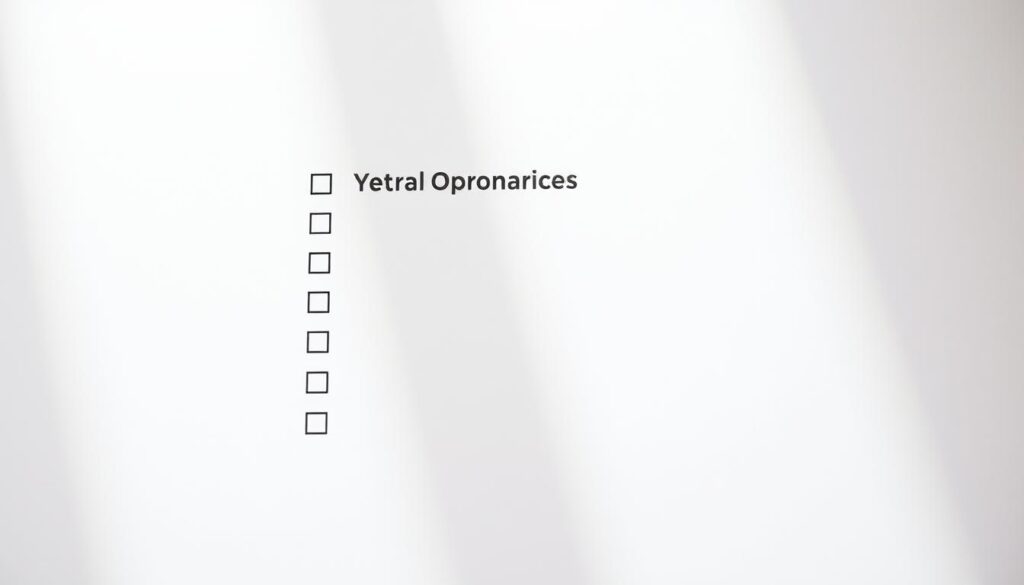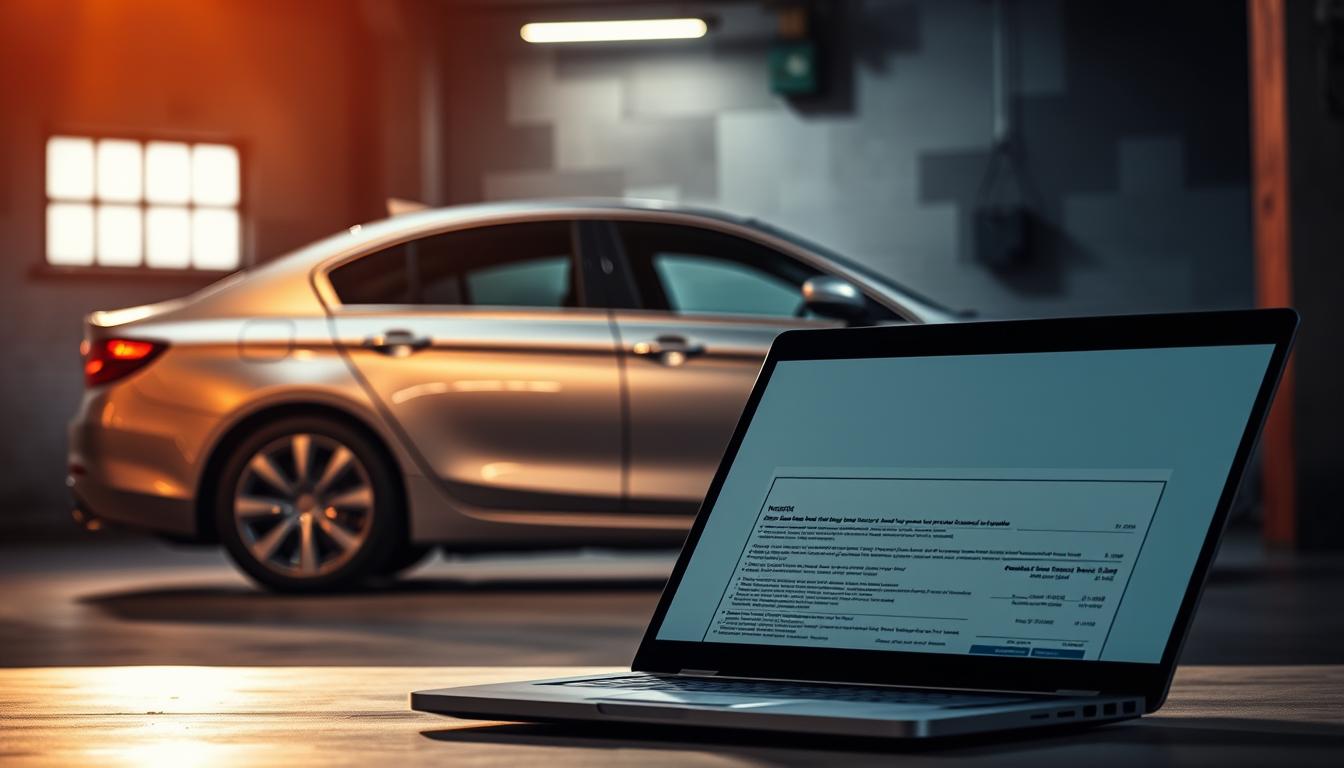Getting approved for a Car Loan with Bad Credit can feel daunting, but practical steps make it manageable. Lenders look at more than a single number: they check credit history, income, and existing debts to judge affordability.
Start by setting realistic expectations. Expect higher rates and tighter terms than prime borrowers, but know options exist. Online lenders like Carvana and marketplaces such as Autopay and iLending serve lower scores. Dealer networks and banks may shop multiple offers to speed approval.
Prequalification and soft checks let you compare offers without harming your score. Gather pay stubs and ID before you apply. Consider a co-signer or a larger down payment to improve approval odds and lower the rate.
Key Takeaways
- Expect higher rates and stricter terms, but approval is possible.
- Lenders weigh score, income, and debts—prepare documentation first.
- Use prequalification to compare offers without a hard inquiry.
- Shop reputable options like Carvana, Capital One, and refinance marketplaces.
- Plan to refinance after building a better payment history.
Shopping intent in 2025: What buyers with bad credit need to know before applying
In 2025, buyers should expect lenders to pair credit scores with fresh data signals before approving applications. Many institutions flag scores of 580 or less as high risk and treat 670+ as a better tier. Know which scoring models matter: FICO Auto Score, FICO 8/9, and VantageScore 3.0/4.0 often guide decisions.
Use soft-pull prequalification tools such as Capital One’s Auto Navigator to preview offers without a hard inquiry. That helps you compare rates and terms before you formally apply.
- Document income and debts clearly—alternative data often supplements your file.
- Decide if speed or lower rates matters: dealer financing moves fast; banks or credit unions can save you money if you qualify.
- Set a firm monthly payment ceiling and a down payment plan to widen your options.
- Avoid opening new credit accounts while shopping; multiple hard pulls can hurt scores and stall approvals.
Plan your timing around strong cash flow and organized documents. Target lenders known for flexible underwriting and confirm which factors they weigh most to refine your approach.
What a bad credit auto loan is and how lenders view your credit profile
A bad credit auto loan helps borrowers with damaged or thin credit history secure financing, but it carries higher costs.
Lenders use score ranges to orient approval. Many classify 670+ as good and 580 or less as high risk. Dealers often sort applicants into tiers (580–619 low, 500–579 poor, 300–499 very poor).
Credit score ranges and what “bad credit” means for auto financing
Payment history drives roughly 35% of a score, while amounts owed add about 30%.
Length of credit history, new accounts, and credit mix split the remaining 35%. That mix shapes the final rate and the maximum loan amount a lender will offer.
Beyond scores: Income, debts, and down payment as approval factors
Underwriters check income stability and debt-to-income ratios as closely as the raw score. A steady income can offset a thin history.
A larger down payment lowers risk and often leads to better terms. Expect stricter verification and lower caps on approved amounts for subprime files.
| Factor | Approx. weight | Impact on approval |
|---|---|---|
| Payment history | 35% | High — past delinquencies reduce approval odds |
| Amounts owed | 30% | High — heavy utilization raises rates |
| Length of credit history | 15% | Medium — longer histories help |
| New credit & mix | 20% | Medium — recent accounts or odd mixes can hurt |
- Subprime programs target low scores or thin files and are priced for added risk.
- Use prequalification tools to compare offers and avoid unnecessary hard inquiries.
Best lenders for a Car Loan with Bad Credit: Top picks and who they’re for
Not every financing source treats thin or damaged files the same—some focus on speed, others on flexibility.
Carvana offers an online-first experience and no stated minimum score. Prequalification takes about two minutes. A seven-day return policy and no prepayment penalty make it a strong fit for buyers who value convenience and predictable terms.
Capital One Auto Finance
Capital One allows co-signers and uses Auto Navigator for soft prequalification. It serves most states and helps preview dealer-specific offers before you shop in person.
CarMax Auto Finance
CarMax pairs a huge used cars inventory with in-house and partner lenders. Expect no prepayment penalty and access to multiple underwriting options to compare offers.
Autopay
Autopay is a refinance marketplace. It can deliver preapproval and, sometimes, same-day funding across 24–96 month terms. Extras include gap coverage and service contracts.
Westlake Financial
Westlake works across a broad credit spectrum and offers low or $0 down options. Its wide dealer network helps buyers who need flexible upfront terms.
iLending
iLending focuses on refinancing and offers long terms up to 96 months. It requires roughly a 560 minimum score and minimum income, so it suits borrowers aiming to lower monthly payments later.
| Lender | Best for | Key benefit |
|---|---|---|
| Carvana | Online buyers | Fast prequal, 7-day return |
| Capital One | Those needing a co-signer | Auto Navigator prequal |
| CarMax | Used vehicles shoppers | Multi-lender offers |
| Autopay | Refinancers | Preapproval & same-day funding |
| Westlake | Low down payment seekers | $0 down options |
| iLending | Long-term refinancers | Terms up to 96 months |
How to choose: weigh service and benefits alongside APR. Use soft prequalification at several lenders to compare offers and avoid needless hard inquiries.
Dealer-first alternatives: Indirect financing networks that consider bad or no credit
Dealer networks can open doors for buyers whose files struggle to win traditional approvals. Indirect financing pairs a local dealership with specialty lenders to match applicants to programs that accept nonstandard income and histories.

Credit Acceptance operates nationwide and helps dealers approve customers in all 50 states. The network reports payments to all three major bureaus and offers AutoPay plus a dedicated customer service center.
Who may qualify
- No minimum score required — approval can be possible even for very thin files.
- Accepts varied income types, including self-employed or temporary earnings.
- May approve applicants with prior repossessions or Chapter 7/13 bankruptcy on record.
Benefits include faster approval than some banks and a large dealer network that connects customers to inventory and underwriting options. Prequalification reveals a maximum monthly payment and helps you find participating stores nearby.
Understand the in-store process: dealers select vehicles, match lenders, and handle contracts. Ask about add-on products and compare total costs. This pathway can help rebuild credit history while you maintain reliable transportation and later pursue refinancing to lower costs.
Local dealership route example: How a franchise store helps bad credit buyers
A local franchise store can bundle several lender options to increase approval chances for shoppers with challenged histories. Toyota of Southern Maryland is one example: their team offers one-on-one customer service and routes applications to multiple lenders to find the best fit.
Toyota of Southern Maryland’s approach
Their finance team reviews each customer’s credit history, categorizing scores (580–619 low, 500–579 poor, 300–499 bad). They explain score components: payment history 35%, amounts owed 30%, length 15%, new credit 10%, and credit mix 10%.
What they evaluate before approval
- Income and recurring expenses to verify ability to pay monthly amounts.
- Missed or late payments and overall history that affect pricing and risk.
- Requested amount and term to keep payments within budget.
- Previous repossessions or bankruptcies; specialized lenders in the network may still consider applications.
Tip: Use the dealership’s service and lender relationships to get competitive options, then compare those offers to any prequalified direct offers you hold. Good communication with the team speeds resolution of stipulations and moves approval along faster.
How to improve your approval odds and lower your rate before you apply
A few focused steps before you apply can lower your financing rate and widen lender options.
Boost your credit score quickly
Pay all bills on time. On-time payments are the fastest way to lift a score and show reliable behavior to lenders.
Check your reports for errors and dispute inaccuracies. Correcting mistakes can produce immediate gains.
Strengthen the application
Add a creditworthy co-signer or increase your down payment to reduce the amount financed. Both moves lower perceived risk and may cut your rate.
Pay down revolving balances to reduce utilization; that can move a score faster than opening new accounts.
Plan to refinance after consistent payments
If you need a vehicle now, target 6–12 on-time payments then shop refinance options. Autopay offers preapproval and fast funding for refinancing, while iLending provides long terms (up to 96 months) for borrowers who meet minimums.
- Avoid new hard inquiries before applying.
- Keep pay stubs and bank statements current to speed underwriting.
- Set calendar reminders to protect future credit and support better offers.
Rates, terms, and fees to expect with bad credit car loans
Rates and fees change quickly for lower-score files; know the typical ranges before you shop. Subprime APRs are higher because lenders price in extra risk. Typical spreads can be dramatic depending on profile and vehicle age.
Typical APR ranges and why subprime rates are higher
Expect APRs anywhere from the low single digits up to the high 20s for challenged profiles. For example, Westlake Financial lists about 2.99%–29.99% APR on certain programs.
Why the jump? Lenders compensate for higher default probability, older used cars, and thin files by raising rates.
Loan terms from 24 to 96 months: payment trade-offs and total cost
Terms often range from 24 to 96 months. Longer terms lower monthly payments but raise the total interest paid.
Marketplaces like Autopay and iLending can extend terms to 96 months to ease cash flow, especially for refinance cases.
Prequalification vs. hard inquiry, prepayment penalties, and late fees
Use prequalification tools for a soft pull to compare offers without impacting scores. Final approval triggers a hard inquiry.
Check contracts for early payoff rules; many lenders have no prepayment penalty, but policies vary.
| Feature | Typical range | What to watch |
|---|---|---|
| APR | 2.99%–29.99% | Vehicle age, scores, and income drive pricing |
| Term | 24–96 months | Longer term = lower monthly, higher total cost |
| Fees | Late fee, possible origination | Grace periods and payoff rules differ by lender |
- For used cars, expect stricter caps on age and mileage and sometimes higher rates.
- Track your scores during shopping and avoid stacking hard pulls in a short window.
Pre-approval and application checklist for a faster yes
A quick pre-approval often comes down to how well your paperwork is organized. Prepare items in advance to move from prequalification to final approval without delays.

Documents you’ll need: income, identity, residence, insurance
Gather essentials: government ID, Social Security number, recent pay stubs, and bank statements. Add proof of residence and current insurance to complete the file.
Take clear photos or scans so you can upload documents during the application. If you plan to trade in a vehicle, include title or payoff details to speed processing.
Prequalifying online with lenders and dealer networks
Use soft-pull prequalification tools like Capital One’s Auto Navigator or dealer networks such as Credit Acceptance to preview terms and a maximum monthly payment.
- Cross-check any minimum credit score or profile needs before you apply.
- List monthly obligations to confirm a realistic payment that fits your budget.
- Prepare employment references and contact details for quick verification.
- Compare prequalification results for APR, term, fees, and required down payment.
| Step | Why it matters | Action |
|---|---|---|
| Proof of income | Verifies ability to pay | Upload 2–3 recent pay stubs or bank statements |
| Identity & residence | Confirms applicant details | Provide government ID and utility bill or lease |
| Prequalification | Shows expected terms | Run soft pulls at 2–3 lenders or networks |
| Trade-in details | Speeds final funding | Bring title or payoff amount |
Conclusion
Focus on affordability first. Prioritize a simple budget and proof of steady income to improve approval odds. Target lenders and dealership teams that handle challenged profiles, like Carvana, Capital One, CarMax, Autopay, iLending, and Credit Acceptance.
Use prequalification tools to compare offers, then pick the best mix of rate, term, and benefits. Keep payments manageable so you can rebuild credit history and lower your rate later through refinancing.
If you need to get car fast, a dealer network or a local franchise team can speed approvals and help customers navigate fees, add-ons, and service options. Stay organized, read contracts carefully, and treat each on-time payment as progress toward a stronger financial future.
FAQ
How can I qualify for a car loan if my credit score is low?
Start by checking your credit report for errors and paying down high-interest balances. Provide proof of steady income and bring a larger down payment to reduce the lender’s risk. Consider a creditworthy co-signer or shopping at lenders that specialize in subprime financing. Getting prequalified online helps you compare offers without immediate hard inquiries.
What should buyers in 2025 know before applying?
Expect more digital tools for prequalification and a stronger focus on income verification. Dealer transparency varies, so compare Auto Navigator, Carvana, and direct lender prequal tools. Watch for rising rates and inflation-driven costs; lock in the best offer quickly and check total out‑of‑pocket costs, not just the monthly payment.
What does a subprime auto application look like to lenders?
Lenders evaluate credit reports, current debts, employment history, and the size of your down payment. A low score raises the APR and may require additional documentation. Some lenders also consider recent payment patterns and any public records like bankruptcies or repossessions when setting terms.
What credit score ranges are commonly considered “bad” for auto financing?
Scores below roughly 620 often fall into subprime tiers. Lenders classify ranges differently, but below 580 is typically seen as high risk. Even with a lower score, you can find financing, though rates and required down payments are usually higher.
Besides scores, what else matters for approval?
Income stability, existing debt levels, and the amount you can put down matter a lot. Lenders calculate a debt-to-income ratio and look for consistent employment or reliable alternative income sources. A larger down payment and shorter loan term improve approval chances and reduce total interest paid.
Which lenders are good options for subprime financing?
Nationwide online options include Carvana for easy shopping and returns, Capital One Auto Finance for co-signer friendly prequalification, and CarMax Auto Finance for broad used inventory. Refinance marketplaces like Autopay and iLending may help later. Westlake Financial often works with buyers needing low or no down payment.
What are dealer-first financing networks and how do they help?
Indirect networks let local dealerships submit applications to multiple partner lenders. Firms like Credit Acceptance approve applicants across all states and report to major bureaus. These networks can help buyers with no score, prior repossessions, or recent bankruptcies find funding through participating dealers.
How do franchise dealerships assist buyers with poor credit?
Many franchise stores, such as regional Toyota and Honda dealers, offer credit review teams that shop multiple lenders on your behalf. They gather income documents, identify suitable loan amounts, and propose vehicles that match payment goals while steering you toward realistic financing options.
What practical steps improve approval odds and reduce my rate?
Pay bills on time, dispute report errors, reduce revolving balances, and save for a bigger down payment. Using a co-signer often lowers rates. After improving your profile, consider refinancing with platforms like Autopay or iLending to secure lower monthly costs or shorter terms.
What APRs and terms should I expect if I have a low score?
Subprime APRs are higher than prime rates and vary by lender, region, and loan length. Terms can range from 24 to 96 months; longer terms lower monthly payments but increase total interest. Always compare APR, loan length, and fees to understand the full cost.
How do prequalification and hard credit pulls differ?
Prequalification uses a soft credit check and gives estimated rates without affecting your score. A hard inquiry happens when you formally apply and can lower your score slightly. Shop via prequal tools first to compare offers, then submit formal applications to the best lenders.
What fees should I watch for in subprime financing?
Watch for origination fees, dealer add-ons, prepayment penalties, and late fees. Some lenders charge documentation or processing fees. Ask for a full breakdown before signing and consider financing through reputable institutions to avoid hidden costs.
What documents do I need to apply quickly?
Prepare photo ID, recent pay stubs or proof of income, bank statements, proof of residence (utility bill), and current insurance information. If applicable, bring vehicle title or trade-in paperwork. Having these ready speeds underwriting and increases your chance of a fast approval.
Can I prequalify online with lenders and dealer networks?
Yes. Many lenders and dealer networks offer online prequalification that uses soft pulls to estimate rates. Use tools from Capital One Auto Navigator, Carvana, CarMax, and indirect dealer portals to compare offers before visiting a showroom.
When should I refinance after getting approved?
Consider refinancing once your credit improves, your income rises, or market rates drop. Refinance marketplaces like Autopay and iLending can shop offers and may provide lower APRs or better terms. Wait until you’ve built several on‑time payments and reduced outstanding balances for the best results.

